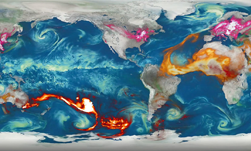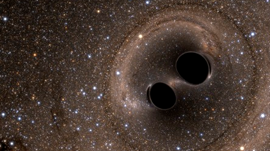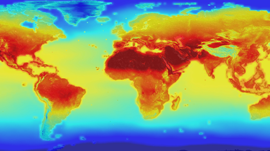To help accelerate multi-messenger (MMA) astrophysics with deep learning, dozens of researchers from multiple communities including HPC, AI, physics, data analytics, and astronomy have written a new paper published in Nature Reviews Physics that looks into the best techniques for bringing AI-based processing to multi-messenger astrophysics.
MMA astrophysics is an interdisciplinary field that combines data from various instruments that probe the Universe using different cosmic messengers. These include electromagnetic waves, cosmic rays, gravitational waves, and neutrinos.
“In this Expert Recommendation, we review the key challenges of real-time observations of gravitational wave sources and their electromagnetic and astroparticle counterparts, and make a number of recommendations to maximize their potential for scientific discovery,” the researchers stated in their paper.
In the paper, the team addresses several computational challenges that currently limit the scope of existing multi-messenger searches. They include the computational cost of low-latency gravitational wave searches, as well as the need to develop and adopt innovative signal-processing algorithms and computing approaches.
“These recommendations refer to the design of scalable and computationally efficient machine learning algorithms; the cyber-infrastructure to numerically simulate astrophysical sources, and to process and interpret multi-messenger astrophysics data; the management of gravitational wave detections to trigger real-time alerts for electromagnetic and astroparticle follow-ups; a vision to harness future developments of machine learning and cyber-infrastructure resources to cope with the big-data requirements; and the need to build a community of experts to realize the goals of multi-messenger astrophysics,” the researchers explained.
Along with applications, the researchers note that computing infrastructure around the world needs to keep pace with scientific innovation.
Tom Gibbs, a developer relations manager at NVIDIA, says NVIDIA is delighted to be actively involved in the groundbreaking efforts to solving these problems.
Noted in the work are the GPU-accelerated clusters around the world, including Frontera, the National Center for Supercomputing Applications at the University of Illinois at Urbana-Champaign (NCSA) which include dozens of NVIDIA V100 GPUs, the Department of Energy’s Summit supercomputer at Oak Ridge National Laboratory comprised of over 27,000 NVIDIA V100 GPUs, and others.
“Across the spectrum of computational sciences, the supply of large-scale computing resources does not meet the demand,” the researchers stated. “Deployment and operation of sufficient agency resources to cover the majority of the predicted demand over the next few years might best be served by organizing around individual resources scaled around 50–100 PFlops s−1 double-precision, 10–100 petabytes storage, and external network data intake capacity sufficient for the analysis of the expected observational data. The estimated demand will probably require multiple instances of resources/centers at this scale. These should provide common HPC, machine learning/DL and data analytics software environments.”
The work was co-authored Eliu Huerta, head of the Gravity Group at the NCSA and a research assistant professor.
“The realization of the science goals of multi-messenger astrophysics in the big data era will only be accomplished by synergistic efforts among disparate communities. To contribute to this international endeavor, the Gravity Group at the National Center for Supercomputing Applications initiated a science program at the interface of artificial intelligence, large scale computing, and gravitational wave astrophysics,” said Huerta. “This article is a milestone in our community-building efforts to harness the big data revolution to accelerate discovery in multi-messenger astrophysics.”
The writers are optimists about the implications of their work, saying they hope their article will advance the science of multi-messenger astrophysics – pushing the frontiers of the unknown through GPU-accelerated computing.
Read the full paper, “Enabling real-time multi-messenger astrophysics discoveries with deep learning,” in Nature review.










